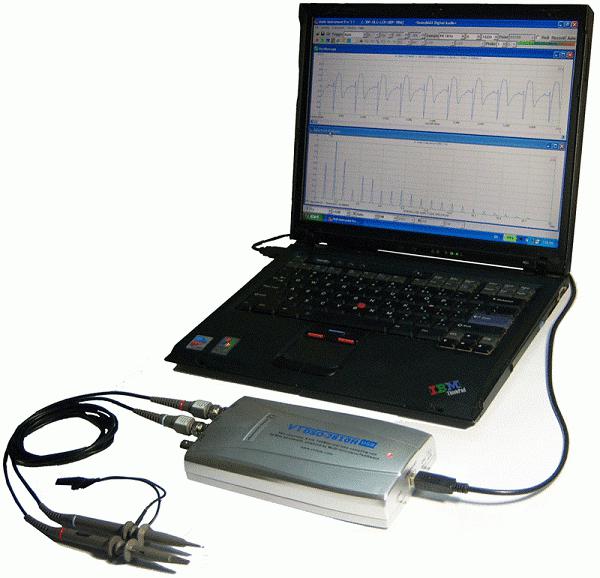How to make an oscilloscope from a sound card
Every radio amateur in his homeThe laboratory should have a device like an oscilloscope. It is required for repair and adjustment of electronic circuits. In addition, without the mentioned device, there is no way to do in studying new schemes and their properties. However, the cost of a digital or analog oscilloscope is quite high. You can try to find a device that was in use, but not everyone will be able to afford such devices. This article is devoted to how to make an oscilloscope from a sound card. The price of such alteration is insignificant, after all for the basis of the device the mentioned detail of the personal computer undertakes. Special software is used to display the waveform.

Oscilloscope on a sound card: advantages and disadvantages
The advantages of this device can beto carry a low cost, of course, except for the computer itself. Now about the shortcomings. Immediately make a reservation: there will be more than merits. The main disadvantage with which an oscilloscope is characterized from a sound card is a very high sensitivity. It reacts even to radio interference, as a result of which oscillograms can have errors. The second drawback is the fact that the input interface of the sound card is capable of withstanding the signal amplitude not exceeding 2 V. This means that the card can easily fail. This drawback must be taken into account when manufacturing the adapter. The oscilloscope from the sound card is not able to measure the DC voltage.

How to make an adapter
First of all, it is necessary to take into account the inputthe level of the sound card, most often it does not exceed two volts, and in some cards - not more than one volt. Naturally, it will not be enough to measure such an amplitude. This requires an adapter, which will increase the amplitude range of the signal. The software - oscilloscope - has two admissible levels of measurements: 12.5 V and 250 V. The basic circuit of such a device contains only six elements - resistors. R1 and R2 have a nominal resistance of 1.5 MΩ, R3 and R4 are 75 kΩ, R5 and R6 are 1.5 kΩ. The dissipation power of the resistors should not be less than 0.5 W. The circuit has 5 contacts at the input (two from the 250 V source, two from 12.5 V and the fifth from the common wire) and three output pins connected to the line input of the sound card (left and right channels and common).
Let us proceed to a description of the schematic diagramadapter. The first pair of inputs - a "250 V signal source" - is connected to resistors R1 and R2, then to R3 and R4; to the output connector, respectively, the left and right channels of the line input. The second pair "12.5 V signal source" is connected "in the gap" between the resistors, that is, one terminal is between R1 and R3, and the second one is between R2 and R4. And, finally, the last, common output goes to the line-in connector of the sound card. It is connected to the right and left channels through the resistors R5 and R6 connected after a pair of resistors R3 and R4. In order to reduce the effect of interference on the device, it is necessary to place the adapter card in a metal casing. That, in fact, and the entire oscilloscope. The sound card accepts incoming signals, and the software displays oscillograms on the computer monitor.

Setting up the program
To adjust the oscilloscope from soundcard, you need to go into the personal computer's mixer and turn off the gain on the microphone, set the volume level below the average. The received measuring instrument is able to draw a very low-frequency oscillogram quite clearly, as well as to determine the frequency of the signal.







